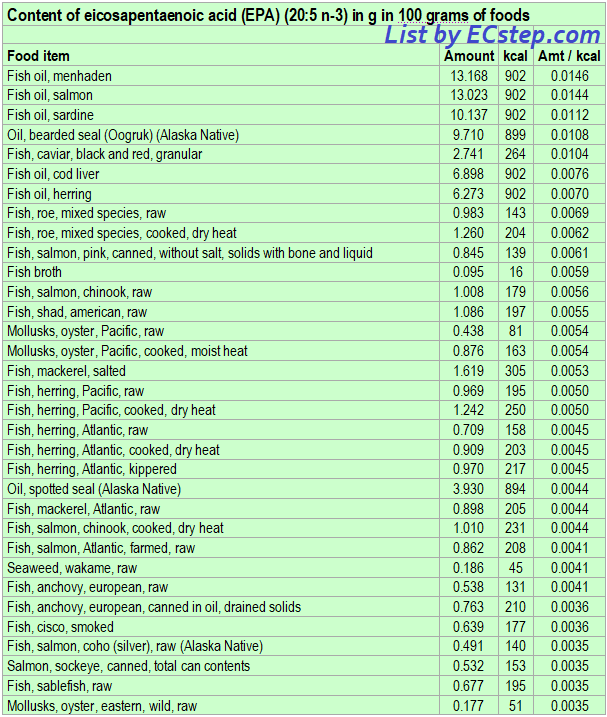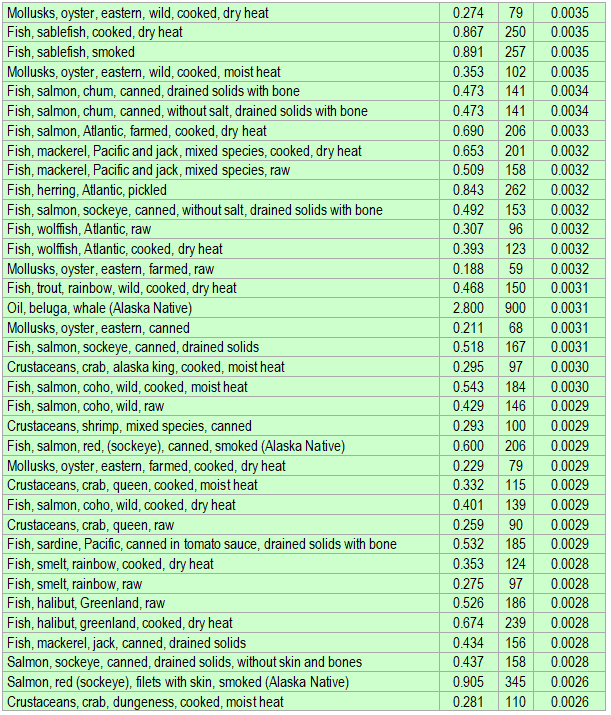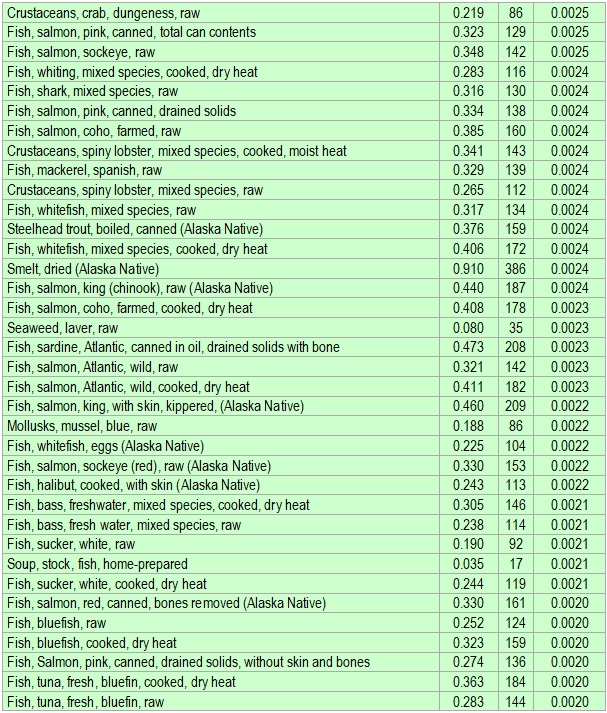Eicosapentaenoic acid (EPA) rich foods
Eicosapentaenoic acid (EPA) is an omega-3 fatty acid. EPA seems to have a beneficial effect in lowering inflammation in cardiovascular and some rheumatic diseases.
It appears that EPA lowers triglycerides and does not raise low-density lipoprotein (“bad cholesterol”).
The omega-3 fatty acid in all plant sources is the essential alpha-linolenic acid (ALA), which needs to be converted in the body to eicosapentaenoic acid (EPA) and docosahexaenoic acid (DHA), which are the best omega-3 fatty acids. This conversion is relatively slow in many people. In addition, the absorption of essential fatty acids is much less from plant than animal sources.
So if you need to boost your intake of omega-3 fatty acids, you would obtain the best effect by eating oily fish or the oils derived from these. More on eicosapentaenoic acid (EPA) here
Below is a list of foods having the highest content of eicosapentaenoic acid (EPA) in grams (g) per 100 grams of the food. The list also includes the number of kilocalories (kcal) and the eicosapentaenoic acid (EPA) content in grams (g) per kcal, and the list is sorted with respect to the latter with the highest values at the top.
As you can see there are many foods having a high eicosapentaenoic acid (EPA) content per kcal. So if you are lacking in eicosapentaenoic acid (EPA), you could easily correct the deficiency by eating some of these foods.
The list is made using ECstep’s Personal Nutrition Data Program and includes more than 100 of the eicosapentaenoic acid (EPA) richest foods. Commercial brand products are not included in this list.




